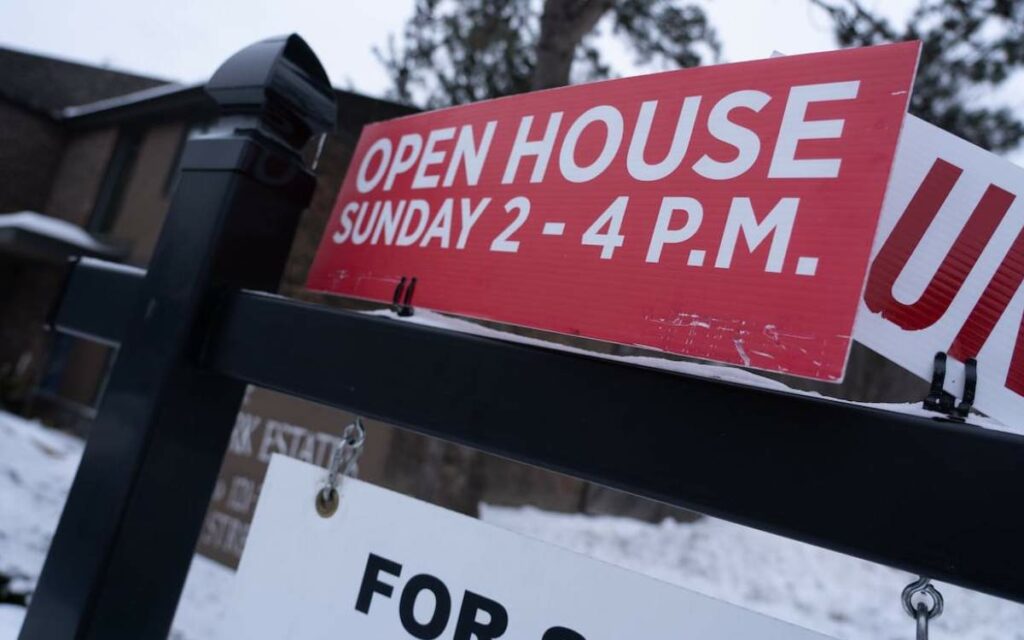
Prices actually slightly increased in six of the Niagara Association of Realtors’ 10 market areas. Only Fort Erie and Port Colborne/Wainfleet saw sizeable month-over-month reductions in property value. Photo credit: CBC/Francis Ferland
Though Niagara’s housing market finished off 2022 on an overall low-note, statistics from the first month of 2023 may indicate prices have bottomed out and the market has finally stabilized.
In January, the local month-over-month price decrease slowed to near zero, as the Housing Price Index (HPI) composite benchmark price for the Niagara Association of Realtors (NAR) catchment area fell a negligible 0.4 per cent to $629,100.
The three months previous the HPI fell between 1.3 and 1.7 per cent, while the three months before that it dropped between 3.7 and 4.9 per cent every 30 days.
“The market has definitely settled in terms of values,” said NAR board of directors president Amy Layton. “Current homeowners can see their homes are holding value at a more realistic point.”
And although sales remain dramatically depressed on a year-over-over basis, the percentage of properties that exchanged hands from December to January increased a full 10 points, rising from 275 to 302.
Of note, the average number of days it takes to sell a home continues to rise on both a yearly and monthly basis. In January 2023 the average number of days it took for a seller to find a buyer was 57 days, compared to 48 in December and 17 in January 2022.
“As expected for January 2023, we are seeing less sales and more homes going up for sale compared to January 2022, which was a highly frenzied seller’s market,” said Layton.
“We are also experiencing a more realistic time frame to sell a residential property, rather than just over a couple weeks as it was a year ago. This means buyers have a chance now to see more homes before making their selection.”
In terms of value across specific municipalities, prices actually increased in six of the NAR’s 10 main market areas.
West Lincoln saw the largest month-over-month price increase in Niagara. From December to January, the town of 15,000’s HPI rose 1.4 per cent from $740,100 to $750,700.
Thorold saw the second largest increase, with prices going up 1.2 per cent from $593,900 to $600,800.
St. Catharines, Lincoln, Niagara-on-the-Lake, and Welland all saw slight upticks of between 0.7 and 0.2 per cent.
The HPI in Niagara Falls and Fonthill/Pelham effectively flatlined from December to January, falling a mere 0.8 and 0.1 per cent, respectively.
Fort Erie and Port Colborne/Wainfleet saw the only significant month-over-month price decreases, bringing the entire regional HPI for January 2023 down.
In Fort Erie, prices dropped a dramatic 4 per cent from $522,700 to $501,700. While in Port Colborne/Wainfleet prices fell 3.6 per cent to $494,700, making it Niagara’s most affordable area, passing Welland.
One explanation for the anomalous price decreases in Fort Erie and Port Colborne/Wainfleet is Canada’s two-year ban on foreign buyers, which came into effect on Jan. 1, 2023.
Niagara’s south coast is a hot spot for Americans investing in secondary homes. In fact, Fort Erie has the highest percentage of foreign-owned properties in the entire province, almost wholly due to the American influx during the summer months. Right around 9 per cent of all properties in the small border town are foreign-owned.
Port Colborne and Wainfleet boast similar numbers, with the latter’s foreign-owned share of all homes at just under 8 per cent.
Though the federal ban exempts recreational prosperities such as cottages and lake houses, both definitional and discretionary concerns may have been enough to drive away certain prospective buyers from across the border, thus helping drive down prices to an extent.
The HPI composite benchmark property for Niagara is currently a 1,259 square foot single detached home between 51 to 99 years old on municipal sewers with three bedrooms, two full bathrooms, forced air, and natural gas.
Calculated using a sophisticated statistical model that considers a home’s quantitative and qualitative features, HPI provides a more stable price indicator than average prices, as it tracks changes to ‘middle-of-the-range’ or ‘typical’ homes and excludes extreme high-end and low-end properties.
The Niagara Association of Realtors service area excludes Grimsby and certain parts of West Lincoln. Those locations are included in statistics provided by the Realtors Association of Hamilton-Burlington.




















